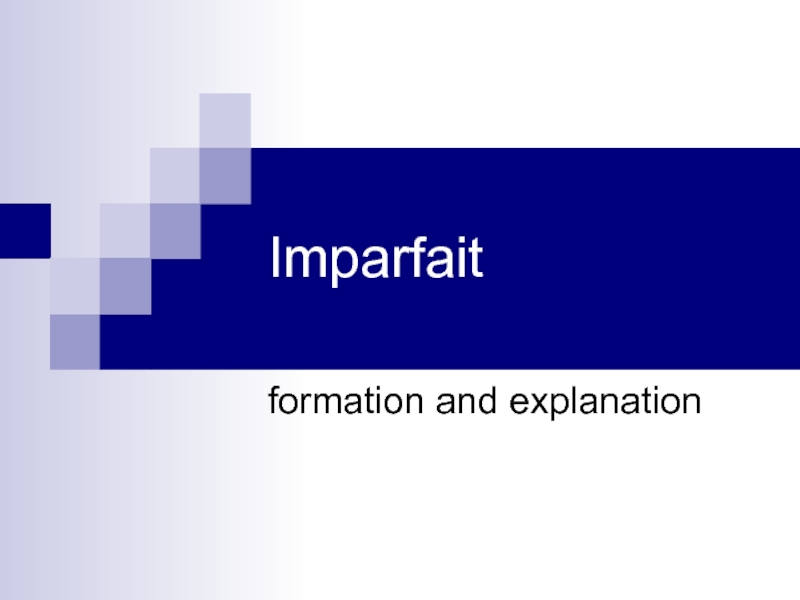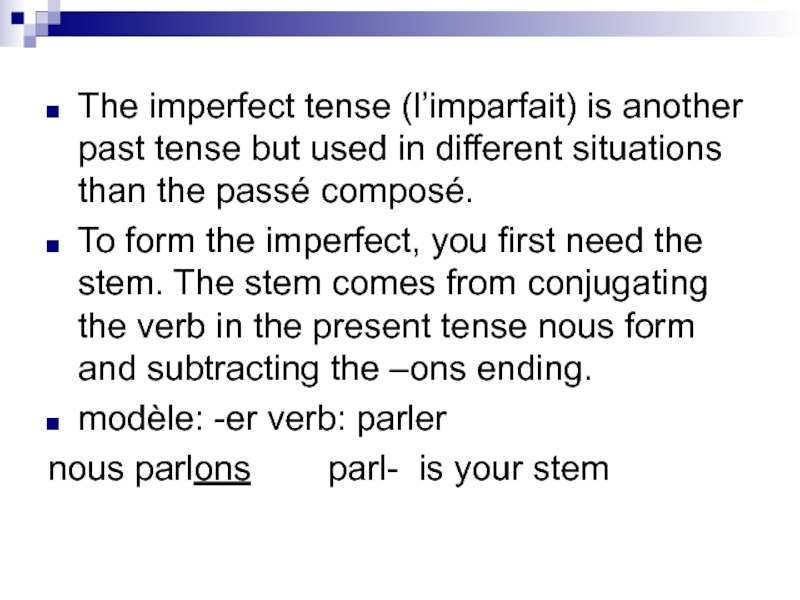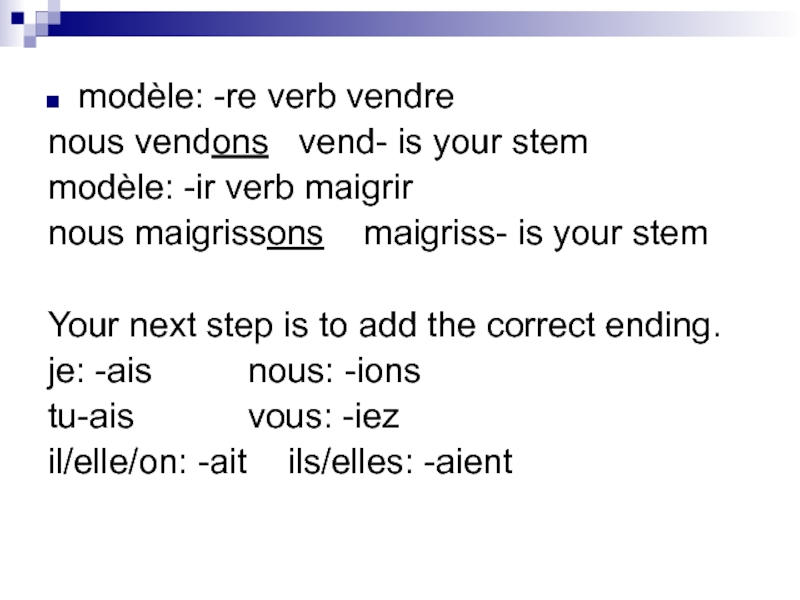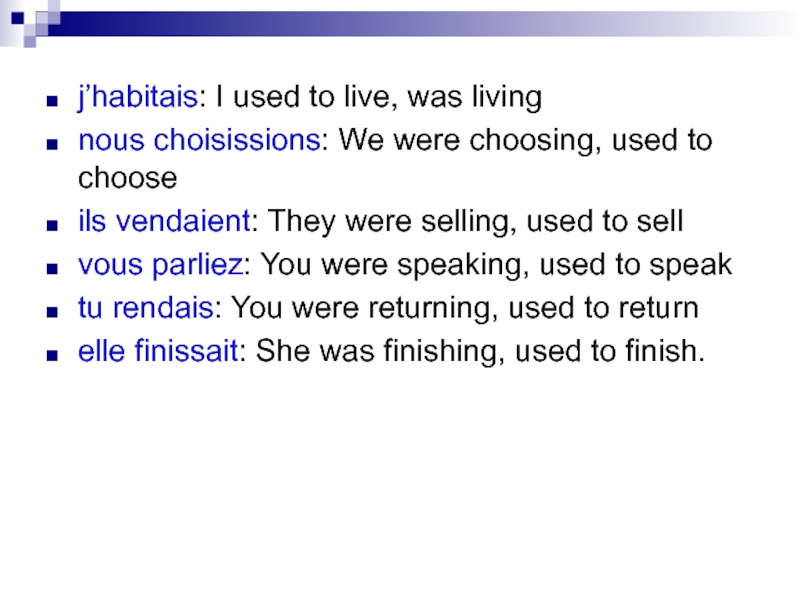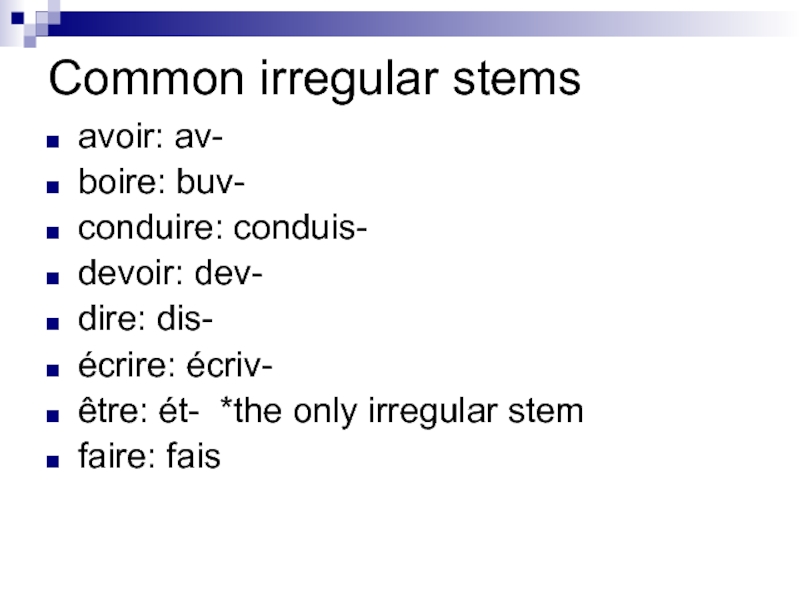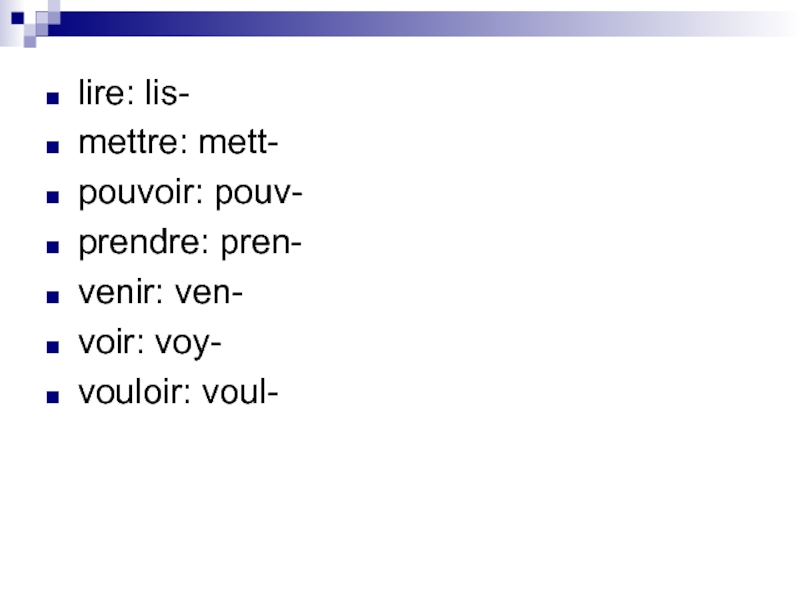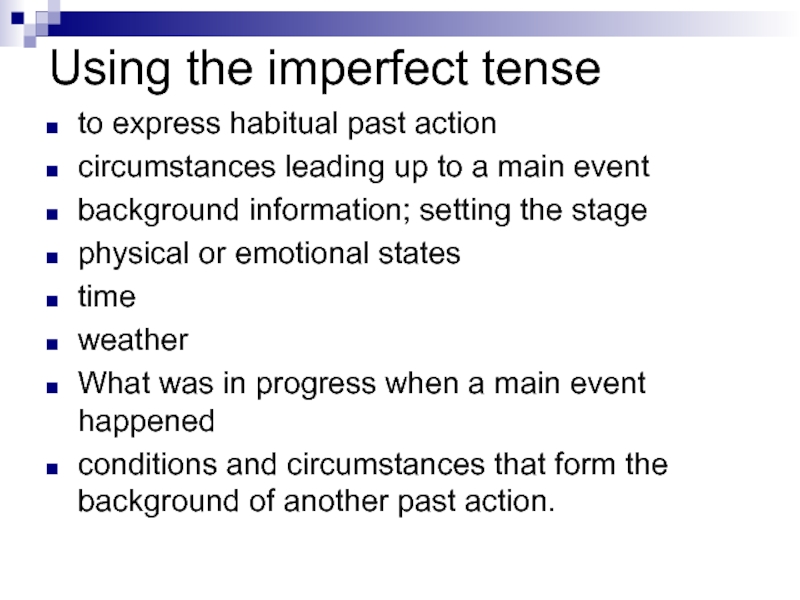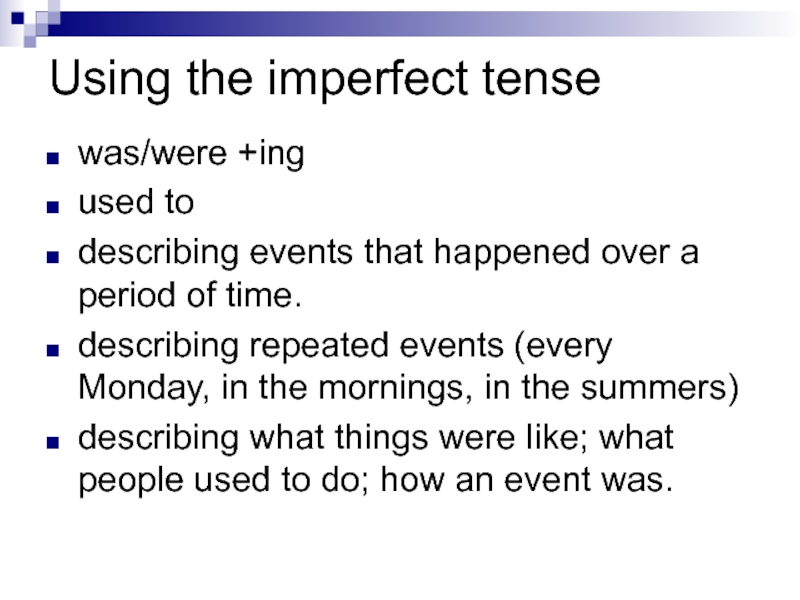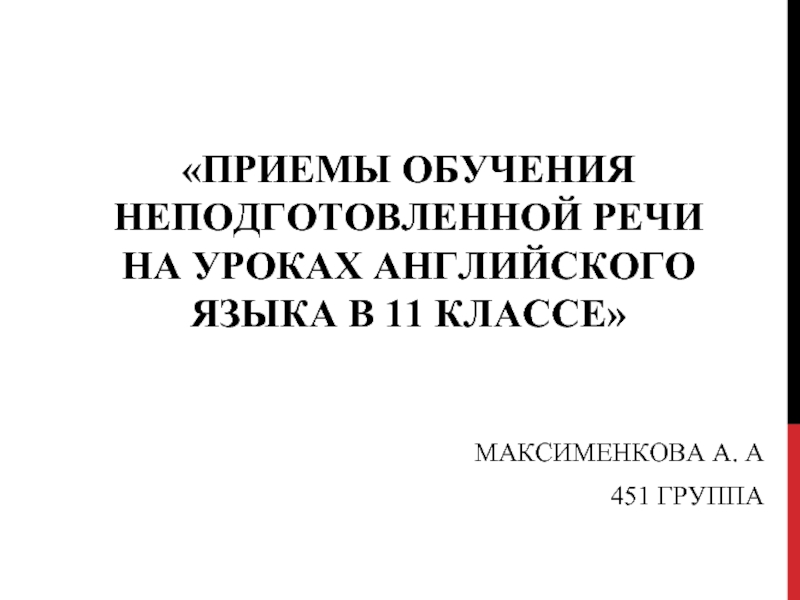- Главная
- Разное
- Дизайн
- Бизнес и предпринимательство
- Аналитика
- Образование
- Развлечения
- Красота и здоровье
- Финансы
- Государство
- Путешествия
- Спорт
- Недвижимость
- Армия
- Графика
- Культурология
- Еда и кулинария
- Лингвистика
- Английский язык
- Астрономия
- Алгебра
- Биология
- География
- Детские презентации
- Информатика
- История
- Литература
- Маркетинг
- Математика
- Медицина
- Менеджмент
- Музыка
- МХК
- Немецкий язык
- ОБЖ
- Обществознание
- Окружающий мир
- Педагогика
- Русский язык
- Технология
- Физика
- Философия
- Химия
- Шаблоны, картинки для презентаций
- Экология
- Экономика
- Юриспруденция
Imparfait. Formation and explanation презентация
Содержание
- 1. Imparfait. Formation and explanation
- 2. The imperfect tense (l’imparfait) is another past
- 3. modèle: -re verb vendre nous vendons
- 4. j’habitais: I used to live, was living
- 5. Common irregular stems avoir: av- boire: buv-
- 6. lire: lis- mettre: mett- pouvoir: pouv- prendre: pren- venir: ven- voir: voy- vouloir: voul-
- 7. Using the imperfect tense to express habitual
- 8. Using the imperfect tense was/were +ing used
Слайд 2The imperfect tense (l’imparfait) is another past tense but used in
different situations than the passé composé.
To form the imperfect, you first need the stem. The stem comes from conjugating the verb in the present tense nous form and subtracting the –ons ending.
modèle: -er verb: parler
nous parlons parl- is your stem
To form the imperfect, you first need the stem. The stem comes from conjugating the verb in the present tense nous form and subtracting the –ons ending.
modèle: -er verb: parler
nous parlons parl- is your stem
Слайд 3modèle: -re verb vendre
nous vendons vend- is your stem
modèle: -ir
verb maigrir
nous maigrissons maigriss- is your stem
Your next step is to add the correct ending.
je: -ais nous: -ions
tu-ais vous: -iez
il/elle/on: -ait ils/elles: -aient
nous maigrissons maigriss- is your stem
Your next step is to add the correct ending.
je: -ais nous: -ions
tu-ais vous: -iez
il/elle/on: -ait ils/elles: -aient
Слайд 4j’habitais: I used to live, was living
nous choisissions: We were choosing,
used to choose
ils vendaient: They were selling, used to sell
vous parliez: You were speaking, used to speak
tu rendais: You were returning, used to return
elle finissait: She was finishing, used to finish.
ils vendaient: They were selling, used to sell
vous parliez: You were speaking, used to speak
tu rendais: You were returning, used to return
elle finissait: She was finishing, used to finish.
Слайд 5Common irregular stems
avoir: av-
boire: buv-
conduire: conduis-
devoir: dev-
dire: dis-
écrire: écriv-
être: ét- *the
only irregular stem
faire: fais
faire: fais
Слайд 7Using the imperfect tense
to express habitual past action
circumstances leading up to
a main event
background information; setting the stage
physical or emotional states
time
weather
What was in progress when a main event happened
conditions and circumstances that form the background of another past action.
background information; setting the stage
physical or emotional states
time
weather
What was in progress when a main event happened
conditions and circumstances that form the background of another past action.
Слайд 8Using the imperfect tense
was/were +ing
used to
describing events that happened over a
period of time.
describing repeated events (every Monday, in the mornings, in the summers)
describing what things were like; what people used to do; how an event was.
describing repeated events (every Monday, in the mornings, in the summers)
describing what things were like; what people used to do; how an event was.
